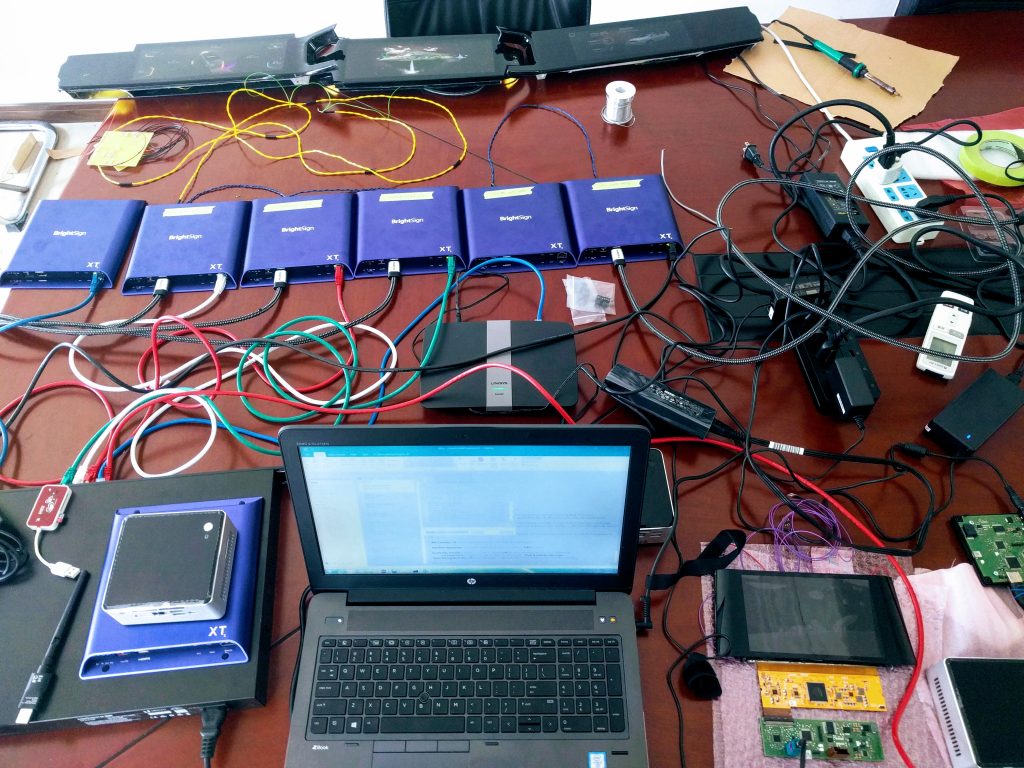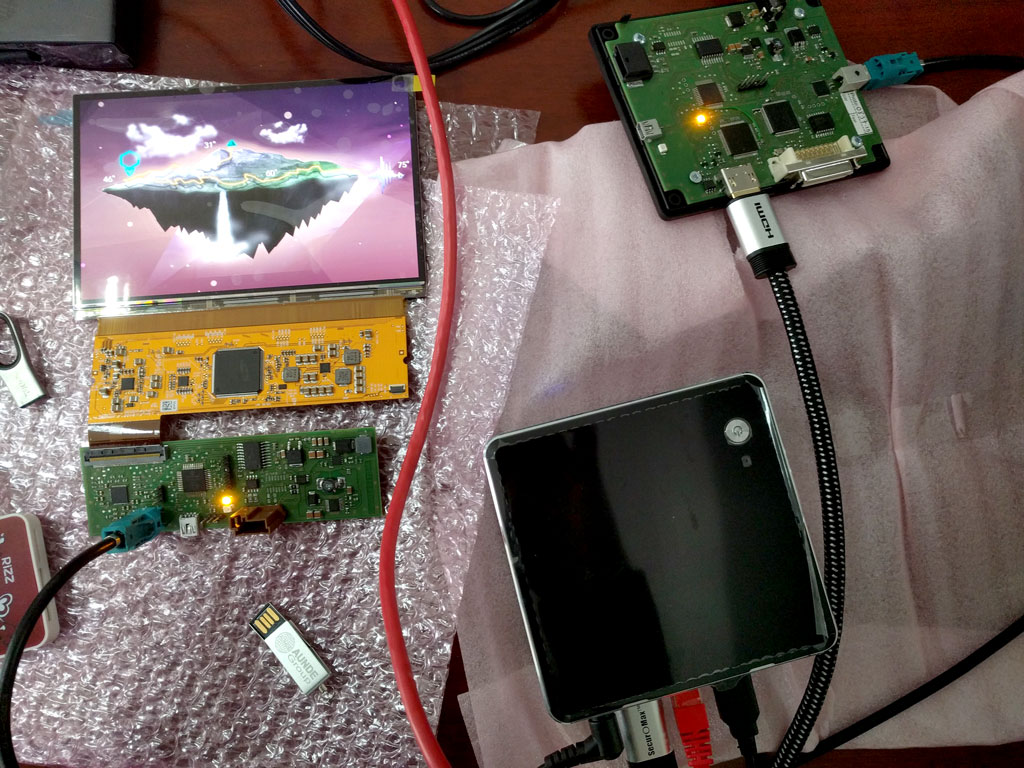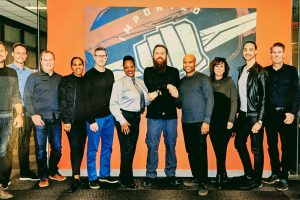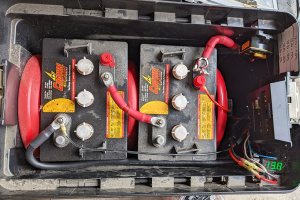Prototyping on Location in China
In 2017, I had the opportunity to document my work on Bringing the Jeep Yuntu Concept to Life while prototyping on location in Shanghai, China. This Jeep concept vehicle featured 11 displays that needed to be powered and perfectly synchronized at the flip of a switch. Over the course of two weeks, I built the server and set up the displays on-site. During this time, I collaborated with Sebastien, my supplier counterpart from Magneti, who had traveled from France. Together, we tackled numerous challenges, including broken displays caused by bonding seal leaks, incompatible screens where Brightsigns couldn’t read the EDID, and tight build timelines. Despite the obstacles, it was a rewarding and unforgettable experience.
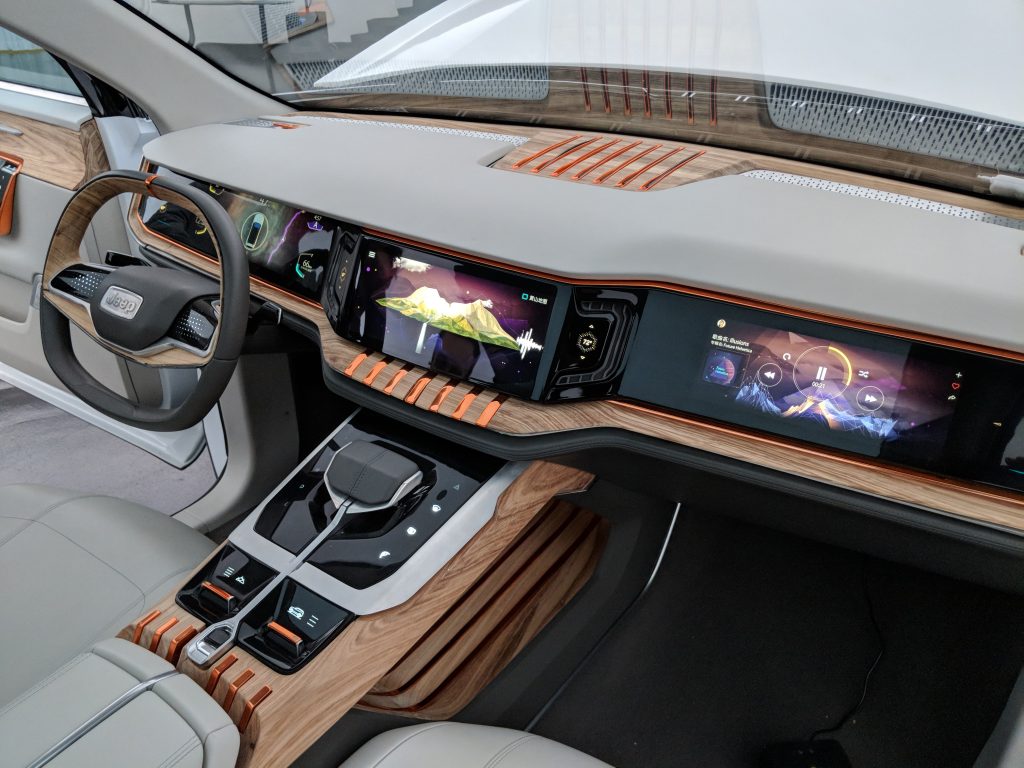
Node.js and Socket.IO once again proved invaluable when several displays shipped from France turned out to be incompatible with the Brightsign units I had planned to use for delivering video content. To address this, I deployed Intel NUCs to create quick Linux Ubuntu boxes that integrated seamlessly with the existing Brightsign setup—NUCs always seem to save the day!
Power was another challenge, as I needed to supply energy to over 12 displays within the vehicle. I resolved this by using a Power over Ethernet (PoE) switch to both network and power the digital signage boxes and computers throughout the vehicle.
Collaborating with Sebastien, we worked to integrate displays into the dashboard and seatbacks. Despite language barriers, we successfully communicated our plans to the build team using simple wiring diagrams and even hand gestures. It was a great example of teamwork and creative problem-solving.
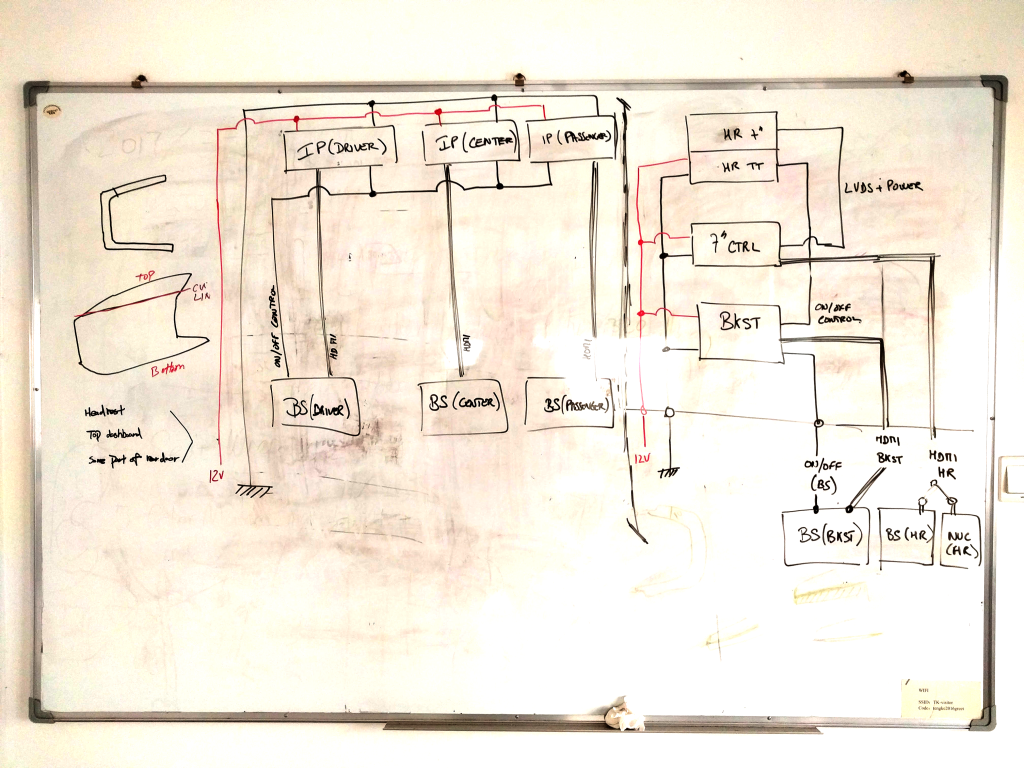
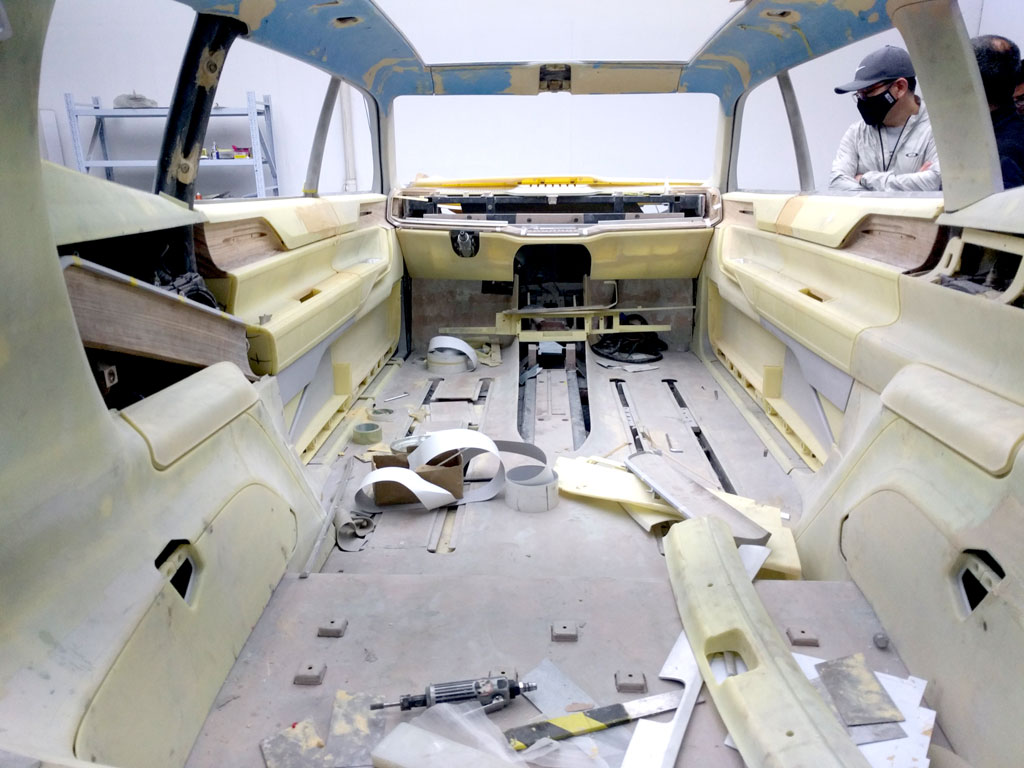
Great Success!
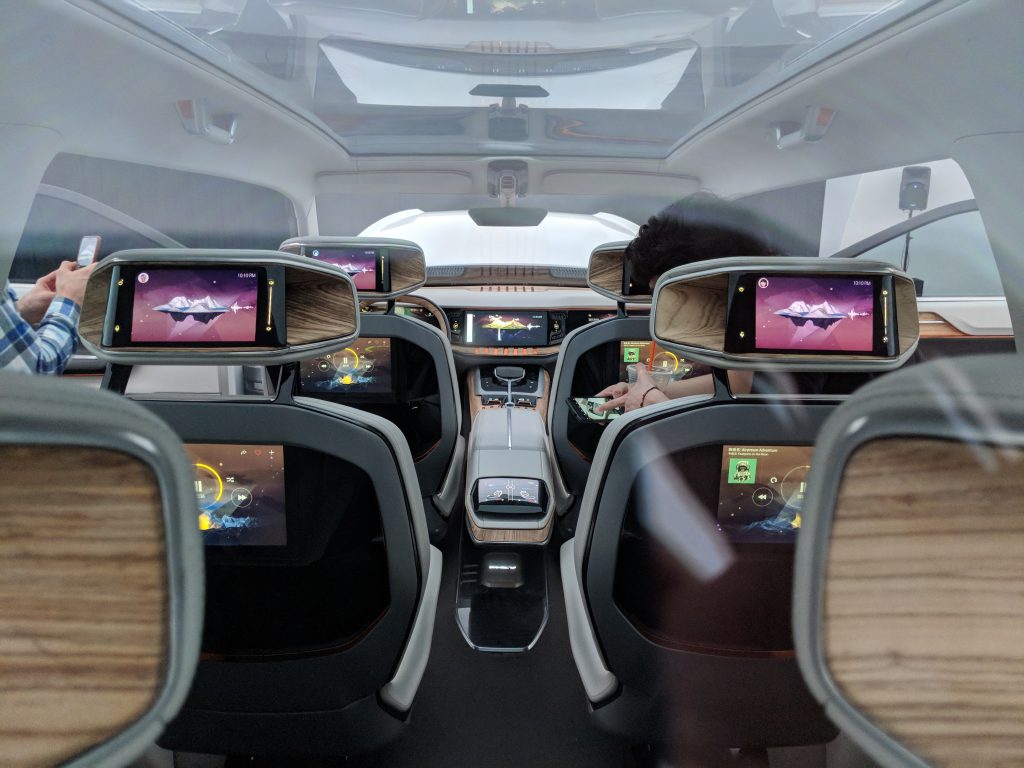
When I left Shanghai, the vehicle wasn’t fully assembled, so I set up the entire system on a desk for my coworker to assist Sebastien with the final installation. My coworker arrived shortly after and successfully completed the integration of the displays. Everything came together perfectly and right on schedule. It’s always incredible to see how much progress a dedicated team can achieve in just a few hours!
